#shopify one product store design
Explore tagged Tumblr posts
Text
I will design, redesign shopify store, shopify dropshipping store, shopify website

Are you looking for a Shopify expert to create a highly profitable Shopify dropshipping store that generates Good revenue?
Look No Further, I will help you
As a Shopify expert with a track record of building successful online businesses, I will assist you in making your dreams a reality.
I am a professional Shopify designer with years of experience. I specialize in design redesign, custom, responsive, visually stunning, high-converting Shopify dropshipping stores / websites that are tailored to your specific business needs and generate significant revenue.
What I Will Provide:
Shopify Store Build and Customization With Premium Theme
Shopify Website Development
SEO Optimization
Responsive Design
App Integration
Payment Gateway Setup
Live Chat Integration
Why Should You Hire Me:
Visually appealing and user-friendly Shopify store design that reflects your brand and engages your audience.
Custom Shopify development to meet your specific needs, from integrating third-party apps to building custom plugins.
Be smart and make smart decisions! Place an order today and enjoy premium services.
Check it out here
#shopify#shopify store#shopify website#shopify dropshipping#dropshipping#shopify store design#shopify store design and redesign#shopify one product store design#shopify store setup#setup shopify dropshipping store#setup shopify store#shopify store creation#copy shopify store#shopify store development#print on demand shopify store#jewelry shopify store
2 notes
·
View notes
Text
Shopify Store Design For MANOJ TRADING CORP

Who wants to start shopify dropshipping, I will provide full store setup+design with full complete course completely free!
#shopify store design#shopify one product store#shopify online store#shopify one page#shopify website#shopify store setup#shopify one product#shopify designer#Shopify Ecommerce Website#shopify expart
0 notes
Text
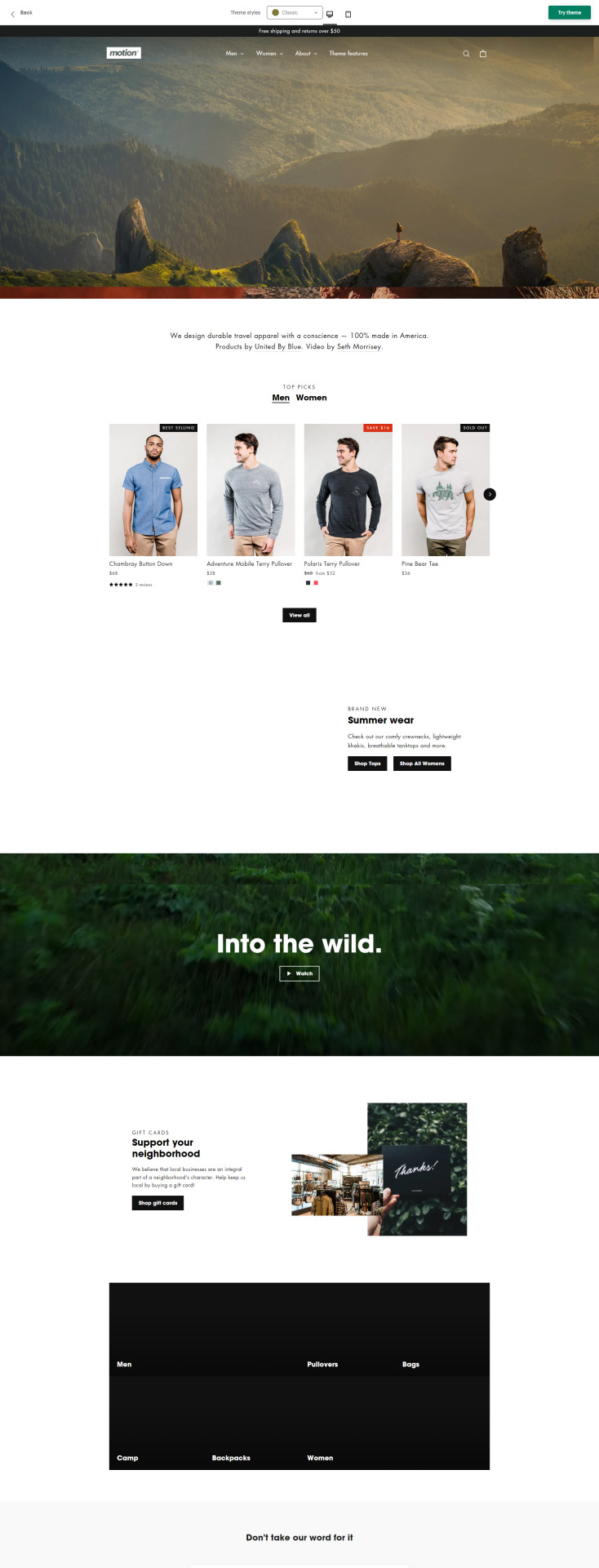
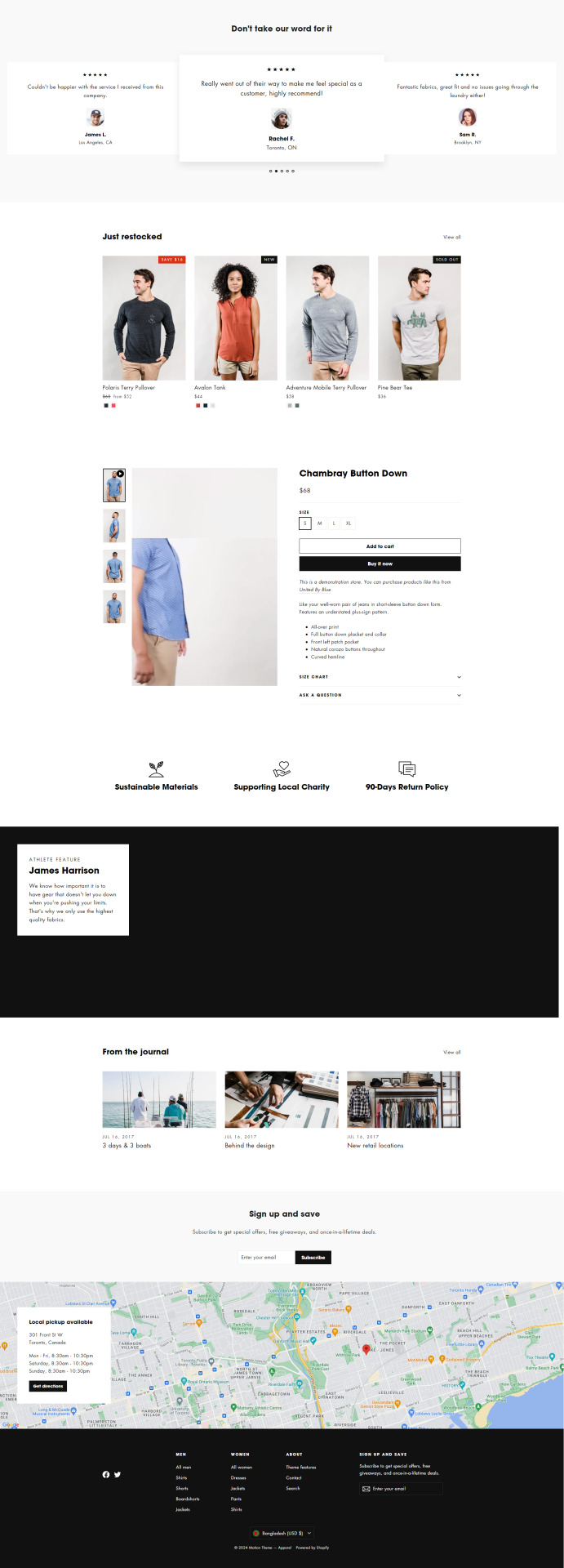
Shopify Store Design
Motion theme Customization.
#shopify#e commerce#elementor#landing pag#wordpress#shopifystore#shopify ecommerce development#shopifyexperts#shopify ecommerce platform#online store#Shopify one product store#shopify store design#Shopify apps#shopify tips#dropshipping
0 notes
Text
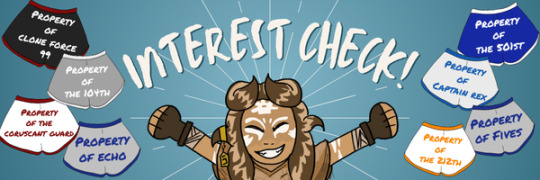
Hello there!
Around a year ago, I came up with some designs for clone booty shorts because they were haunting me and I wanted them. Turns out other people wanted some too!
Someone then reached out to me with a company that could print out the designs and I spent so much time connecting that with Shopify and PayPal and doing a bunch of shit to pull it all together and for a bit it was successful!
However, to keep the shop up it costed like,, $34-$39 a month and after a bit there were no sales and that wasn't something I could sustain/continue to pay for. So I put the store on hold because I didn't want to take it all down since I spent so much time on putting it together 🙃.
BUT!!
I want to bring it back :D
However, that's only if there's enough interest in the shorts! Of course, I do have other products and am planning on making others as well! (Some examples of what is up on the site are under the cut!)
I want to see how many people might be interested in actually getting something from the shop, should it go back online to see if it's worth bringing back. Though, if there are a good handful I might just have it up for the summer and then put it back on hiatus then rinse and repeat. But we shall see!
That being said...
Please reblog!!
That way it can reach as much people as possible :) Thank y'all so much 🩵💫
Some product images under the cut!
Keep in mind all the shorts have a little logo pertaining to the clone on the front of them! (as seen with the clone force 99 ones with the skull and 99 logo)
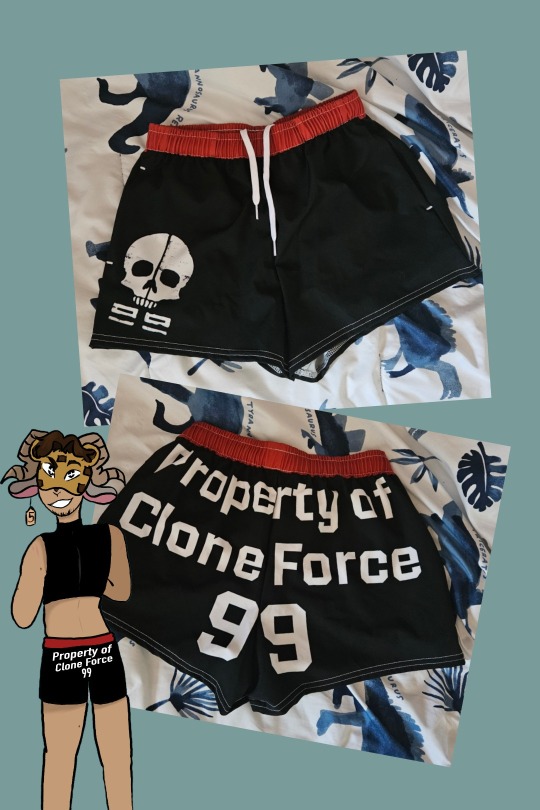




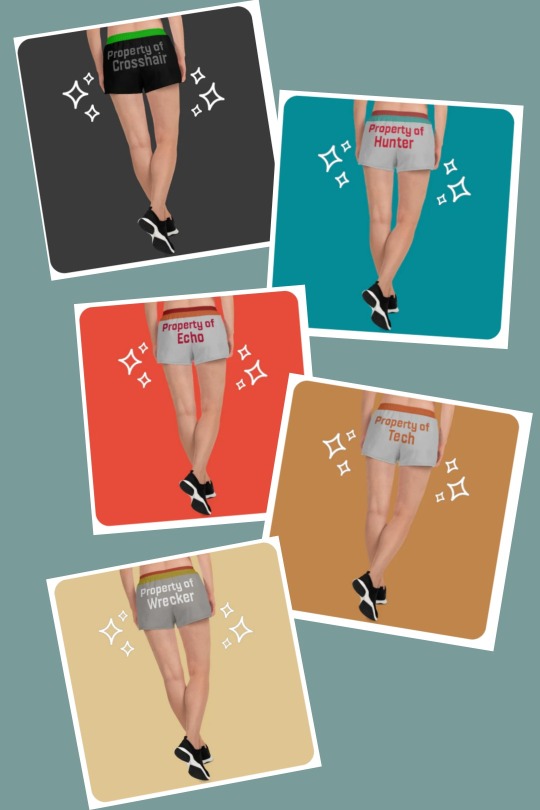
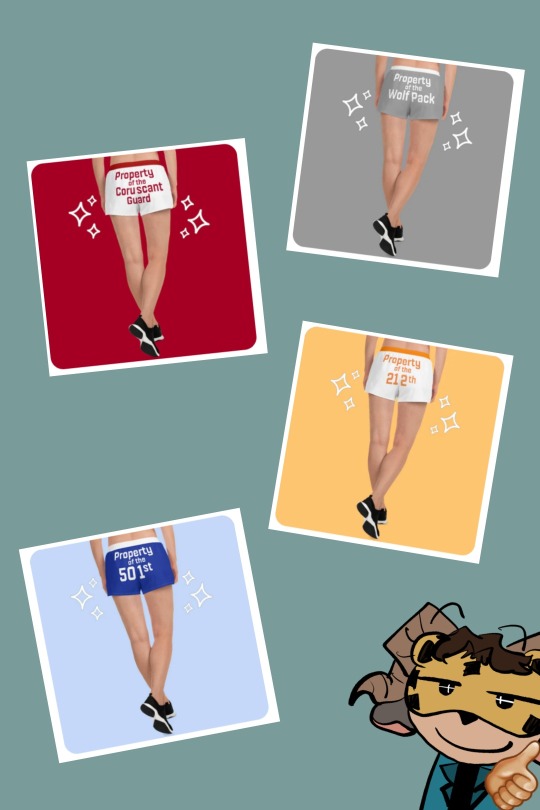

Here is a link to the store to see more!
#going to tag a bunch of clones for exposure reasons#clone shorts#tcw#the clone wars#tbb#bad batch#the bad batch#star wars#clone force 99#clones#clone wars#captain rex#commander cody#commander wolffe#commander fox#clone troopers#501st#212th#104th#wolf pack#coruscant guard#corrie guard#tbb wrecker#tbb crosshair#tbb hunter#tbb tech#tbb echo#arc trooper fives#dominio twins#arc trooper jesse
85 notes
·
View notes
Text
Shopify has a blog problem, this creates a really simple and straightforward opportunity for freelance designers/programmers
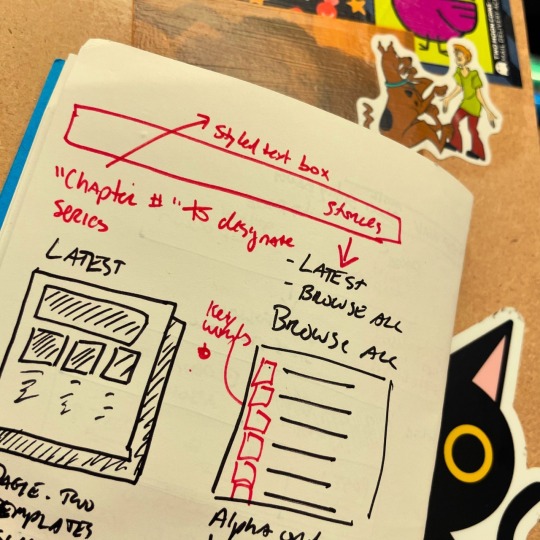
Earlier this year I settled the editorial decisions I needed for a lot of blogging going forward, and recently I've experimented (repeatedly) with the idea of having a blog on a separate platform, or using Shopify's system.
Having two sites would allow me to blog on a WordPress site, but creates... two sites, therefore complicates everything more. More maintenance, design, etc. etc.
I am actively seeking to make my life easier so I am foregoing two sites and learning to live with the limitations.
A personal struggle to the surprise of no one.

You can use WordPress and thread Shopify through it via the "buy" button, which is a shortcut for small stores and/or larger stores where you are very comfortable in WordPress.
You cannot use Shopify and thread WordPress through it.
Which is a shame.
Because Shopify's native blog platform is fucking horrible.

An independent graphic designer who can program, or a programmer who can design, cannot solve Shopify's problems.
They are inherent to the system and likely built on legacy code Shopify doesn't want to update because it'll cost a fortune.
I'll just be mad about this until the market forces them to address this opportunity and they revamp their blogging platform. That's fine.
Or maybe decades will pass and they won't. That's... fine too. I guess.

I am rambling this out because if I were in the business of freelance graphic design and/or programming I would jump on this immediately. I used to be and always shared opportunities with friends and it was fun and I kinda miss that aspect of the life.
I'm not in that business, and I have in-house programming, please don't pitch me, but do consider pitching... pretty much everyone with a Shopify site and a blog as Phase 01 of your plan, and everyone who has a Shopify site and does not have a blog as Phase 02 of your plan.
Here is what I would tackle:
Shopify blogs have two structures: "blog" and "blog post".
A blog in Shopify is essentially a category in WordPress, with more limitations, such as, a blog post can only be in a single "blog". That sucks but it means your life as a designer/developer gets more interesting.
Most Shopify themes come out of the box with 1 "blog" and 1 "blog post" template. They are exceptionally simple, usually. I would build a few test templates and offer them to clients "these will be modified to fit your direct style."
For some reason -- I'm guessing focus -- most blogs in Shopify have the image on top. If you structure "image on the left, image on the right" as options you can offer clients, you've just tripled their layout capabilities.
For another reason, I don't know why, but almost all shopify blog post templates I've seen do not have sidebars. Which is insane?! You can control that from the fucking "blog post" template so it would be an easy win.
You could work around the "a post can only be in one blog on Shopify" issue by having a sidebar that pulls the latest 3 (or 5 or whatever) posts as links for other blogs on the site: TEST SITE has 3 blogs. When you're looking at a post on BLOG 01, in the sidebar, you see a link to the latest post on BLOG 02 and BLOG 03. Similarly, when you're looking at a post on BLOG 02, the sidebar has the latest post from BLOG 01 and BLOG 03 (and so on)
The template I use, off the shelf, uses the Shopify's user name and details for the author of the blog. Once a blog post is created, in Shopify, you cannot alter the author. This is dumb as fucking rock salt on slug popcorn. But, again, systematic, I'm pitching ideas on ways around it -- exclude this and just use a CUSTOM DATA field to allow the Shopify owner to pick the relevant author. This cuts down on the need for extra Shopify users, tremendously, and builds in the opportunity for WordPress-style author footers on blog posts.
Emulate the very common filtering on products -- dropdowns, sorting mechanisms -- with tags on a sidebar on BLOG templates. This will be tricky because you cannot hook into the Search & Discovery function, but it's absolutely no where near impossible. And would be amazingly useful.

Overall Shopify is a decent platform with significant advantages.
There blogger apps but holy shit that is so unnecessary. If they were a one-time-fee, it would be fine, but they aren't, they're generally $20+/month.
I'm not interested in paying for a service that ties me into another tech system that I am fucked if they go out of business, jack up their prices, introduce a feature I don't like, or remove a feature I do like.
For something like a blog system.
Which relies HEAVILY on very structured, single-built, near-infinitely-reused templates.

A low effort, high yield opportunity exists for independent designer/programmers to come up with a suite of designs and say "hey with some very simple modifications, we can take 1 of the following, apply it to your store, and dramatically increase your in-site blogging opportunities."
You start with a base "blog post" template and a base "blog" template and then every time someone hires you to add a feature to theirs, using Shopify's core tech -- you're just applying paint -- you now have a second set of templates.
Recycle forward.
One time fee per client -- likely low, but again effort is low since 90% of the code is re-used -- and each time you secure a client, you have opened a networking door.

Just make sure you include instructions and/or a premium service for when the customer upgrades their theme version -- "occasionally your theme author will upgrade, and this may get lost... so do the following to bring it back and/or we'll handle it for you for $X and Y-days notice."
Business opportunities are everywhere.
Good luck!
I repeat don't add me to your pitch list, I have a programmer in-house, but use this idea to make a business or extend yours!
This isn't financial advice, it is annoyed rambling!
#shopify#small ecommerce#small business#web design#ecommerce design#blogging#shopify blogging#graphic design#blog design
21 notes
·
View notes
Text
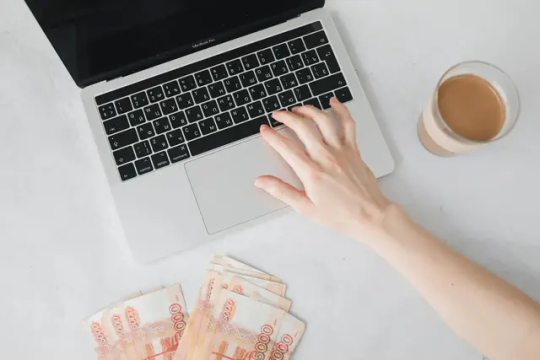
Best Ways to Make Money Online
This review examines some of the top ways to earn money online, providing information on their potential, prerequisites, and suitability for various skill sets. The digital age has completely changed the way we approach work and income generation, and with so many opportunities at our fingertips, anyone with an internet connection can now make money online.
1. Freelance:
One of the most well-liked methods of earning money online is freelancing, which provides freedom and a variety of chances. Freelancers and clients from a variety of industries are connected by websites such as Upwork and Freelancer. There is probably a need for your abilities whether you are a marketing, programmer, graphic designer, or writer. Building a solid portfolio, establishing competitive prices, and upholding positive customer connections are essential for success in freelancing.
2. Market Research and Online Surveys:
One simple approach to make extra money is to take part in market research and internet surveys. Users are compensated for their thoughts on goods and services by websites like Vindale Research, Survey Junkie, and Swagbucks. Although the salary isn't very high, it's a clear and easy way to earn some extra cash in your free time.
3. Affiliate Marketing:
Promoting goods and services while receiving a commission for each sale made via your referral link is known as affiliate marketing. This approach works especially well for website owners, bloggers, and social media influencers. Numerous product options are available for promotion on platforms such as ClickBank, ShareASale, and Amazon Associates. Building a solid online presence and being aware of the needs of your audience are essential for affiliate marketing success.
4. E-commerce and Dropshipping:
For people who want to sell goods online, dropshipping or opening an e-commerce business can be quite profitable. With the help of platforms like Shopify, WooCommerce, and Etsy, business owners can easily launch online stores. Because dropshipping ships goods straight from suppliers to buyers, it eliminates the need for inventory management. Finding a niche market, using efficient marketing techniques, and providing high-quality items are essential for success in this industry.
5. Content Creation and Monetization:
Content creation on websites like YouTube, TikTok, and Instagram may be rewarding and lucrative for creative people. Sponsorships, item sales, and advertising money are examples of monetization options. It takes time and work to develop a loyal following, but those who are successful in producing interesting and distinctive content stand to gain greatly.
6. Online Tutoring and Courses:
Online tutoring and course development have emerged as lucrative revenue sources with the growth of e-learning. People can teach things they are interested in or experienced at thanks to websites like VIPKid, Teachable, and Udemy. Online education is becoming more and more popular, whether it is for professional development courses, programming, or language tutoring. Developing an organized curriculum and interesting content is essential to drawing in and keeping learners.
Conclusion:
To sum up, the finest online income-generating strategies rely on personal abilities, passions, and objectives. There are opportunities for everyone, regardless of your preference for the freedom of freelancing, the inventiveness of content creation, or the ambitious spirit of e-commerce. The internet has made it feasible for anybody to make money from their talents and interests from the comfort of their own home, even though success in these endeavors demands commitment and hard work.
Source: nexreview.com/best-ways-to-make-money-online
#make money online#make money fast#make money as an affiliate#make money with chatgpt#make money home
2 notes
·
View notes
Text
How to Add Testimonials to Your Shopify Store?
Testimonials play a vital role in online shopping. They help build trust and encourage visitors to make purchases. Adding testimonials to your Shopify store can increase credibility. Shopify Support Agencies explain how to add testimonials easily.

Why Testimonials Are Important for Your Shopify Store?
Testimonials show social proof. They highlight customer satisfaction and real experiences. Buyers trust reviews from other customers. Positive testimonials can boost your sales and reduce doubts. They also make your brand look professional.
Adding testimonials can improve your store's reputation. This leads to higher conversion rates. People trust businesses with authentic customer feedback. Testimonials are an essential part of any Shopify store.
Ways to Collect Testimonials from Customers
There are several ways to collect testimonials. Start by requesting feedback from satisfied customers. You can use email or post-purchase surveys.
Social media platforms are also great for gathering reviews. Monitor comments or direct messages for positive feedback. You can even offer discounts in exchange for testimonials.
Encourage customers to leave reviews directly on your store. Use Shopify apps to simplify this process. The goal is to make it easy for customers to share their experiences.
How to Add Testimonials to Your Shopify Store?
Adding testimonials to your Shopify store is straightforward. There are several methods to display testimonials effectively. Here are the main options:
1. Use Shopify’s Built-in Features
Shopify themes often have sections for testimonials. Check your theme’s settings. Look for a “testimonial” section or similar. Add customer reviews directly into this section.
You can customize the layout based on your preferences. Use short, engaging testimonials for better readability. Update this section regularly with fresh feedback.
2. Use a Dedicated Shopify App
Shopify offers many apps for testimonials. Apps like Loox, Judge.me, and Yotpo make adding reviews simple. Install the app and follow the setup instructions.
These apps provide advanced features like photo or video testimonials. They also let you display star ratings. Most apps allow customization to match your store’s design.
3. Create a Custom Testimonials Page
You can dedicate a page for customer testimonials. Go to your Shopify admin panel. Create a new page and name it “Testimonials” or “Customer Reviews.”
Add reviews manually or use apps to automate the process. Keep the layout clean and easy to read. Include customer photos or names to make the testimonials credible.
4. Add Testimonials to Product Pages
Adding testimonials to product pages is effective. It connects reviews directly to specific products. Use apps to display reviews on product pages.
Highlight the most relevant testimonials for each product. Ensure the design does not overcrowd the page. This helps customers make quicker purchasing decisions.
5. Display Testimonials in the Homepage Banner
Featuring testimonials on your homepage grabs attention. Add quotes or star ratings to the main banner. Many Shopify themes allow this customization.
Choose the best testimonials to feature prominently. This builds trust immediately when visitors land on your store.
Best Practices for Using Testimonials
1. Use Authentic and Specific Testimonials
Ensure testimonials are genuine. Avoid fake reviews as they can harm your reputation. Specific reviews work better than generic ones.
2. Highlight Key Benefits in Reviews
Choose testimonials that mention unique features of your products. Highlight how your store solved problems for customers.
3. Include Customer Photos or Videos
Adding images or videos with testimonials increases credibility. It makes the reviews more relatable and trustworthy.
4. Keep Testimonials Fresh
Update testimonials regularly. New reviews show that your store is active and reliable. This keeps customers engaged.
5. Make Testimonials Easy to Read
Use short, concise testimonials. Avoid long paragraphs. Use bullet points or bold text to emphasize important parts.
Top Shopify Apps for Managing Testimonials
Here are some popular apps for adding testimonials:
Loox: Allows photo and video reviews. Includes email requests for customer feedback.
Judge.me: Affordable app with customizable layouts and widgets.
Yotpo: Premium app with advanced features like visual reviews and analytics.
Stamped.io: Focused on product page reviews. Integrates well with Shopify themes.
These apps simplify testimonial management. Choose one based on your needs and budget.
Conclusion
Testimonials are powerful tools for building trust. They showcase customer satisfaction and drive sales. Adding testimonials to your Shopify store is simple. Use built-in features, apps, or custom pages to display reviews.
Follow best practices for effective testimonials. Highlight authentic feedback and update regularly. With testimonials, your Shopify store can attract more customers and boost revenue.
2 notes
·
View notes
Text

🎥 In this video, I’ll show you how to:
✔️ Create a Google Merchant Center account 🛍️
✔️ Connect it to your Shopify store 🔗
✔️ Start listing your products on Google Shopping 🚀
💡 Take your Shopify store to the next level by appearing on Google’s free product listings & Shopping Ads!
🎯 Watch now and get started today!
🌐 Blogger, Marketer, or YouTuber? Ready to elevate your marketing strategy? Unlock essential tools designed to amplify your success. 💼✨
🔗 Access Tools Now: https://linkst.in/debashreeduttatech
More Resources: For services that take your digital game to the next level, visit us here: https://techteacherdebashree.com/digital-marketing-agency/
🔥 Stay Connected: Join me, Tech Teacher Debashree, across social media for trends, insights, and digital tips. Let’s build your digital journey together!
🌐 All Links in One Place: https://linktr.ee/techteacherdebashree
💥 Don’t Miss Out — tap into game-changing tools now! Let’s conquer the digital world together. 🚀📈 #DigitalMarketing #MarketingTools #DebashreeDutta
#EcommerceTips #ShopifyGrowth #GoogleShopping
2 notes
·
View notes
Text

Starting an e-commerce business can be an exciting venture with immense potential. However, with the opportunities come challenges and uncertainties. Before diving into the world of online retail, it’s crucial to plan carefully and set a solid foundation. Here are some essential tips to consider before launching your e-commerce business:
1. Conduct Market Research
Understanding the market is fundamental to any successful business. Start by identifying your target audience and analyzing competitors. Research trends, customer preferences, and potential gaps in the market. Tools like Google Trends, social media analytics, and industry reports can provide valuable insights. This research will help you tailor your products or services to meet market demands and differentiate yourself from competitors.
2. Define Your Business Model
E-commerce offers various business models, such as B2C (Business to Consumer), B2B (Business to Business), C2C (Consumer to Consumer), and subscription-based models. Determine which model aligns with your goals and resources. Each model has its own set of challenges and requirements, so choose one that best fits your product or service and target market.
3. Create a Solid Business Plan
A comprehensive business plan serves as a roadmap for your e-commerce venture. Outline your business goals, strategies, target audience, marketing plan, financial projections, and operational plan. This document will not only guide your efforts but also help secure funding if needed. A clear plan can keep you focused and organized as you navigate the complexities of launching and running an e-commerce business.
4. Choose the Right E-Commerce Platform
Selecting the right e-commerce platform is crucial for the success of your online store. Popular platforms like Shopify, WooCommerce, Magento, and BigCommerce each offer unique features and capabilities. Consider factors such as ease of use, scalability, customization options, payment gateways, and integration with other tools. The platform should align with your business needs and provide a user-friendly experience for both you and your customers.
5. Develop a User-Friendly Website
Your website is the face of your e-commerce business. Ensure it’s designed to be user-friendly, visually appealing, and optimized for mobile devices. A clean, intuitive layout with easy navigation will enhance the shopping experience and reduce cart abandonment rates. Focus on high-quality images, detailed product descriptions, and a seamless checkout process. Additionally, implement search engine optimization (SEO) strategies to improve your site’s visibility in search engines.
6. Implement Secure Payment Processing
Security is a top priority in e-commerce. Customers need to trust that their payment information is safe. Choose a reputable payment gateway and ensure your website uses SSL certificates to encrypt data. Additionally, offer multiple payment options, including credit/debit cards, digital wallets, and other payment methods that are popular with your target audience.
7. Plan Your Logistics and Supply Chain
Efficient logistics and supply chain management are vital for e-commerce success. Develop a strategy for inventory management, warehousing, and shipping. Decide whether you’ll handle fulfillment in-house or partner with third-party logistics providers. Consider shipping options, delivery times, and costs. A smooth and reliable fulfillment process can significantly impact customer satisfaction and repeat business.
8. Craft a Marketing Strategy
Effective marketing is essential to drive traffic and sales to your e-commerce store. Develop a multi-channel marketing strategy that includes social media, email marketing, content marketing, and paid advertising. Create engaging content, run promotions, and leverage social media platforms to build brand awareness and attract customers. Monitor and analyze the performance of your marketing efforts to refine your strategies over time.
9. Focus on Customer Service
Exceptional customer service can set your e-commerce business apart from competitors. Provide multiple channels for customer support, such as live chat, email, and phone. Ensure timely responses to inquiries and resolve issues promptly. Building strong customer relationships and encouraging feedback can enhance customer loyalty and drive positive reviews.
10. Monitor and Adapt
The e-commerce landscape is constantly evolving. Regularly review your business performance, track key metrics, and gather customer feedback. Stay informed about industry trends and technological advancements. Be prepared to adapt your strategies and operations based on insights and changes in the market.
#ecommerce#marketing#business#digitalmarketing#ecommercebusiness#entrepreneur#onlineshopping#website#seo#webdesign#b#marketingdigital#onlinebusiness#branding#shopify#smallbusiness#socialmediamarketing#webdevelopment#online#amazon#shopping#onlinestore#onlineshop#design#ecommercewebsite#dropshipping
5 notes
·
View notes
Text
Elevate Your Business with Expert E-commerce Website Development Services
E-commerce is no longer the future—it’s the present. With online shopping becoming second nature for millions worldwide, businesses must adapt to stay competitive. But creating a thriving e-commerce business takes more than uploading product images and adding a payment option. It demands a carefully crafted platform tailored to customer needs, brand identity, and technological advancements.
This is where an experienced e-commerce website development company like KSoft Technologies can help. We don’t just build websites; we craft experiences that turn casual browsers into loyal customers. In this blog, we’ll explore the importance of e-commerce websites, the role of a development company, and how partnering with KSoft Technologies can help your business thrive.
Why Every Business Needs an E-commerce Website
Let’s start with the basics. Why does your business need an e-commerce platform in the first place?
1. Reach a Global Audience
Your physical store may have geographical limitations, but an online store? The world is your marketplace. With a robust e-commerce website, you can reach customers across continents, breaking barriers like time zones and borders.
2. Operate 24/7
Unlike a traditional brick-and-mortar store, an e-commerce website doesn’t have operating hours. It’s open 24/7, allowing customers to shop anytime, from anywhere.
3. Cost-Effective Expansion
Expanding a physical store involves hefty expenses—rent, staff, utilities. An online store is a fraction of the cost and allows you to scale up without logistical hurdles.
4. Gain Valuable Insights
E-commerce websites are a treasure trove of data. From customer demographics to purchasing trends, analytics tools provide actionable insights to refine your marketing and sales strategies.
What Makes a Great E-commerce Website?
Creating a website is easy; creating an exceptional e-commerce website is not. Here are the must-have features that separate a mediocre website from a great one:
1. Intuitive Navigation
Shoppers shouldn’t need a map to find what they’re looking for. Clear menus, logical product categories, and search filters are non-negotiable.
2. High Performance and Speed
Studies show that a one-second delay in page load time can lead to a 7% drop in conversions. Speed matters, and we optimize every element of your site for peak performance.
3. Responsive E-commerce Website Design
More than half of online shopping happens on mobile devices. Our responsive e-commerce website design ensures your site looks and works beautifully across all devices.
4. Secure Payment Gateway Integration
From credit cards to digital wallets, customers expect secure and versatile payment options. We provide secure payment gateway integration for peace of mind.
5. Customizable Shopping Carts
The shopping cart is where conversions happen. Our customizable carts simplify adding items, applying coupons, and calculating taxes and shipping.
6. SEO-Friendly E-commerce Websites
Your website’s visibility on search engines directly impacts traffic and sales. We build SEO-friendly e-commerce websites with optimized code, meta tags, and fast loading speeds.
Why Work with KSoft Technologies?
Partnering with KSoft Technologies means working with a team that’s as passionate about your success as you are. Here’s what sets us apart:
1. Expertise Across Platforms
Whether you’re looking for Shopify development experts, WooCommerce website development, or Magento e-commerce solutions, we’ve got you covered. Our team has extensive experience with leading platforms.
2. Focus on Customization
Every business has unique needs, and we believe your website should reflect that. Our custom e-commerce solutions are tailored to your specific goals and industry requirements.
3. Scalability and Growth
Your e-commerce website should grow with your business. We build scalable platforms that adapt to increased traffic, product lines, and customer demands.
4. AI-Powered Personalization
We leverage AI to provide personalized shopping experiences, from tailored product recommendations to predictive search functionality.
5. Post-Launch Support
Our relationship doesn’t end at launch. We offer ongoing support and updates to keep your website running smoothly and securely.
Benefits of E-commerce Website Development
If you’re still wondering whether investing in an e-commerce website is worth it, let’s break down the benefits:
1. Increase Sales
A well-designed e-commerce platform makes it easier for customers to browse, buy, and return for more. From intuitive navigation to smooth checkout processes, every feature is geared toward boosting sales.
2. Lower Costs
Compared to traditional retail, an online store saves you money on overhead costs like rent, utilities, and staffing.
3. Build Brand Loyalty
By offering a seamless shopping experience, loyalty programs, and personalized recommendations, your website becomes a trusted destination for customers.
4. Expand Market Reach
With digital tools like social media integration and multi-vendor e-commerce platforms, you can reach more customers and explore new markets.
5. Gain Customer Insights
Analytics tools integrated into your website help you track customer behavior, identify trends, and make data-driven decisions.
Trends Shaping the Future of E-commerce
The e-commerce landscape is constantly evolving, and staying ahead means adopting emerging trends. Here’s what’s shaping the future:
1. Voice Commerce
With devices like Alexa and Google Home becoming household staples, voice search is transforming the way people shop. Optimizing your website for voice commerce ensures you stay relevant.
2. Augmented Reality (AR)
AR is revolutionizing online shopping by letting customers “try” products before they buy. From virtual fitting rooms to 3D product views, AR enhances the online shopping experience.
3. Blockchain Technology
Secure, transparent, and efficient—blockchain is changing the way payments and supply chains are managed in e-commerce.
4. Headless Commerce
This approach decouples the front-end and back-end of your website, giving you greater flexibility and faster load times.
5. Subscription-Based Models
From beauty boxes to meal kits, subscription models are gaining popularity. Adding a subscription option can create consistent revenue streams for your business.
Real-Life Success Stories: How KSoft Technologies Made a Difference
Case Study 1: A Fashion Retailer’s Makeover
A struggling fashion brand approached us with an outdated e-commerce platform that was driving customers away. We revamped their website with a responsive e-commerce design, faster loading times, and secure payment integration. The result? A 200% increase in sales within three months.
Case Study 2: Multi-Vendor Marketplace for Handmade Goods
An artisan collective needed a multi-vendor e-commerce platform to support their growing community of sellers. Our solution included customizable vendor dashboards, real-time inventory management, and integrated analytics. The platform became a go-to destination for handmade goods.
Case Study 3: Expanding a Local Grocery Store Online
A family-owned grocery store wanted to expand online but didn’t know where to start. We built an SEO-friendly website with advanced search filters, subscription options, and mobile optimization. Their monthly sales doubled within the first quarter.
2 notes
·
View notes
Text
What is Shopify?
Shopify is an e-commerce platform that allows individuals and businesses to create online stores and sell products easily. It is one of the most popular platforms worldwide for setting up and managing e-commerce websites due to its user-friendly interface and comprehensive features.
Simple and Detailed Explanation of Shopify
Shopify provides the tools and technology needed to design and manage your online store. Whether you’re selling physical products, digital goods, or services, you can use Shopify to build your website, manage inventory, and process payments.
Shopify’s Features and Benefits
Ease of Use: Shopify is designed to be user-friendly, even for those with no technical background, making it easy to set up and manage your store.
Professional Templates: Shopify offers a range of professionally designed templates that you can customize to match your brand.
App Integrations: You can enhance your store's functionality with a wide range of apps that integrate with Shopify, including marketing tools, inventory management, and customer service solutions.
Security and Reliability: Shopify provides high levels of security to protect your customer data and secure financial transactions.
24/7 Customer Support: Shopify offers round-the-clock support through live chat and email, helping you resolve any issues quickly.
Success Stories
Many entrepreneurs have achieved significant success using Shopify. For example:
Khalifa Al-Ghamdi: Started his online store on Shopify to sell personal care products. Thanks to effective digital marketing strategies and improved customer experience, he increased his sales by 200% within a year.
Sarah Al-Faris: Used Shopify to launch her sustainable fashion store. With professional templates and marketing tools, she saw substantial growth in sales and established her brand in the market.
$1 Offer
Shopify is offering a special deal where you can get the first month of subscription for just $1. This offer provides an excellent opportunity to test the platform and explore its features without a significant financial commitment.
Create your online store today with Shopify
If you’re considering starting or improving an online store, Shopify is an ideal choice. With its ease of use, advanced features, and continuous support, you can build a successful store and boost your sales. Take advantage of the $1 offer for the first month to experience the platform and evaluate its capabilities. Start building your online store today and achieve your business goals.
3 notes
·
View notes
Text
I will be your Shopify expert and developer for Shopify website or Shopify store design

Are you looking for a money-making Shopify website or Shopify dropshipping store?
We are here to facilitate you with our vast experience in Shopify website designing. We have designed multiple figure Shopify websites or Shopify store for our clients. We can help you to design & develop a stunning, modern, eye-catching, user interface and most converting Shopify website, Shopify store or Shopify dropshipping Store from zero to finish and ready to make sell Shopify store for you.
We use modern techniques to convert your Shopify store into Real-Time Business.
Why This Gig?
Shopify Store Design
Premium design
Brand Logo
Automated Dropshipping
On-Page SEO
Trendy Products
Product Description
Marketing Guide
POD to Shopify
Google Analytics
Page Creation
Tracking Order
Product & Collection listing
Setup Payment and Much More.
Why Us?
· 3+ years of experience in Shopify Store Designing
· 100% Satisfaction
· 24/7 Support
· Money-Back Guarantee
Check it out here
Let's elevate your business to new heights together! Feel free to reach out if you have any questions or need more details. 😊
#shopify#shopify store#shopify website#shopify dropshipping#dropshipping#shopify store design#shopify store design and redesign#shopify one product store design#shopify store setup#setup shopify dropshipping store#setup shopify store#shopify store creation#copy shopify store#shopify store development#print on demand shopify store#jewelry shopify store
3 notes
·
View notes
Text
Shopify Store Design For Just Clothing
Who wants to start shopify dropshipping, I will provide full store setup+design with full complete course completely free!

#shopify store design#shopify one product store#shopify online store#shopify one page#shopify website#shopify store setup#shopify one product#shopify designer#Shopify Ecommerce Website#shopify expart
0 notes
Text
Expert Jewelry Website Development at JewelExperts.com
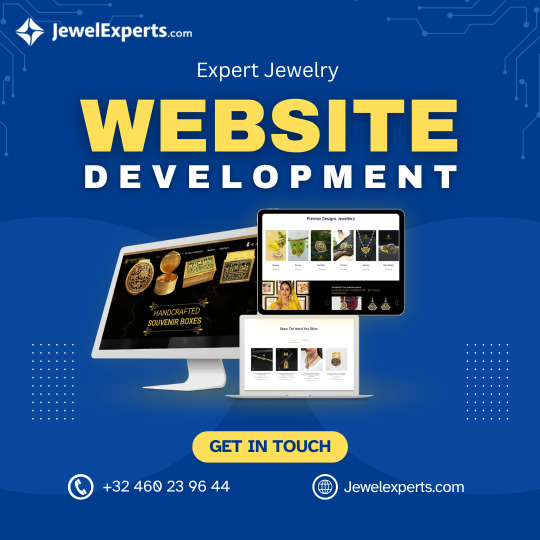
In today’s competitive online marketplace, a professional jewelry website is not just an asset—it’s an essential tool for success. At JewelExperts.com, we specialize in creating visually stunning, highly functional, and fully optimized e-commerce websites for jewelry brands. With a team of experienced developers and designers dedicated to jewelry-specific solutions, we deliver robust e-commerce platforms that increase visibility, enhance user engagement, and drive conversions. Our approach combines the latest in technology and user experience to meet the unique needs of jewelry businesses, whether you’re launching a new online store or revitalizing an existing one.
Why Choose JewelExperts.com for Your Jewelry Website Development?
Jewelry e-commerce presents unique challenges: from high-value products requiring high-definition images to customers seeking customizable, personalized experiences. At JewelExperts.com, we understand these challenges and have tailored our services to offer solutions specific to the jewelry industry.
1. Customized E-Commerce Solutions for Jewelry Retailers
Unlike generic website builders, we offer customized e-commerce solutions that prioritize jewelry-specific needs. From product catalog designs that showcase pieces in high resolution to secure checkout processes that build trust with customers, we ensure every aspect of your website enhances the shopping experience. Customization options include:
Product Visualization: High-resolution imagery, 360-degree views, and 3D renderings bring jewelry pieces to life.
Product Filters and Search Options: Customers can filter by metal, stone, style, and more, ensuring they find exactly what they’re looking for.
Jewelry Customization Tools: Allow customers to personalize rings, bracelets, and necklaces with engraving, stone selection, and size adjustments.
2. SEO-Driven Web Design to Maximize Visibility
Our team integrates SEO best practices into every stage of the design process to ensure your jewelry website ranks highly on Google and other search engines. By optimizing product pages, metadata, and site structure, we help your jewelry site achieve the visibility it needs to attract potential customers. Key elements of our SEO approach include:
Keyword Optimization: We conduct in-depth keyword research to target terms that drive traffic, like “luxury diamond jewelry,” “custom engagement rings,” and “fine jewelry online.”
Mobile Optimization: With a significant percentage of jewelry shoppers browsing on mobile devices, our responsive design ensures a seamless experience on all screen sizes.
High-Quality Content: We integrate informative, keyword-rich descriptions and blogs that not only engage visitors but also help improve search engine rankings.
3. Secure and Scalable Platforms for Growth
Security and scalability are essential for any e-commerce website, especially in the jewelry industry where transactions involve high-value products. JewelExperts.com develops websites on platforms known for robust security and scalability, including Shopify, Magento, and WooCommerce. These platforms provide:
Secure Payment Processing: Advanced SSL encryption protects sensitive customer data, ensuring a secure shopping experience.
Inventory Management: Real-time inventory tracking enables seamless integration with point-of-sale systems, helping you manage stock effectively.
Scalability: As your business grows, so too can your website. We ensure your e-commerce platform can handle increased traffic, inventory, and customer interactions without compromising performance.
4. Visual Design Tailored for Jewelry Brands
A jewelry website should reflect the elegance and luxury of the products it showcases. Our design team at JewelExperts.com uses visually captivating designs tailored to resonate with jewelry buyers. From sophisticated color palettes to intuitive layouts, our design philosophy ensures your website reflects your brand’s aesthetic while prioritizing user experience. Highlights of our visual design approach include:
Elegant Layouts: Clean, modern designs that focus on showcasing jewelry pieces.
Color Schemes: Customizable color schemes that align with your brand identity and appeal to your target audience.
Optimized User Interface (UI): Seamless navigation and logical product categorization create a smooth user journey, guiding customers from discovery to purchase with ease.
5. 3D Jewelry Rendering Services for Enhanced Product Display
In the jewelry market, visual appeal is critical. At JewelExperts.com, we offer 3D rendering services that allow your products to stand out in a crowded online space. These lifelike renderings provide a realistic view of your jewelry, increasing customer engagement and confidence in their purchase decisions. Benefits of 3D rendering include:
Realistic Visuals: Showcase every detail of a product, from intricate designs to gemstone clarity and metal finish.
360-Degree View: Customers can view the piece from every angle, which helps them understand the craftsmanship and quality of the product.
Reduced Returns: By providing a true-to-life view, customers are more confident in their purchase, reducing the likelihood of returns.
6. User-Friendly CMS and Inventory Management Integration
An e-commerce website for jewelry should not only attract and convert visitors but also be easy to manage. Our team integrates content management systems (CMS) and inventory management tools that simplify product uploads, price updates, and inventory tracking. With our systems, you can:
Easily Update Content: Update product descriptions, prices, and images without technical assistance.
Track Inventory: Real-time inventory management keeps your website updated with accurate stock information, helping you avoid overselling.
Order Fulfillment Integration: Streamline your order management process with integration options that automate order processing, shipping, and notifications.
7. Conversion-Focused Copywriting and Product Descriptions
Great copy can make a significant difference in converting visitors to buyers. Our professional copywriters understand the art of conversion-focused writing, creating product descriptions and calls-to-action that speak directly to jewelry shoppers. Each product description emphasizes quality, style, and the emotional connection that fine jewelry often represents. Our copywriting services cover:
Engaging Product Descriptions: Detailed descriptions that convey the luxury, craftsmanship, and unique attributes of each piece.
SEO-Optimized Blog Content: Informative articles that provide value to your customers while driving organic traffic to your website.
Compelling CTAs: Effective calls-to-action that encourage visitors to make a purchase or explore other products on your site.
8. Ongoing Support and Optimization for Long-Term Success
Launching a successful jewelry website is only the beginning. To remain competitive, you need ongoing support to ensure your website continues to perform at its best. Our services at JewelExperts.com include ongoing maintenance, updates, and performance optimization to keep your website relevant and competitive. This support includes:
Regular SEO Audits: We analyze website performance, keyword rankings, and traffic patterns to identify new opportunities.
Content Updates: We assist in updating content to ensure it aligns with SEO best practices and current trends.
Technical Support: Our team is available to address any technical issues, from server performance to security updates.
9. Success Stories: Proven Results for Our Clients
Our portfolio of successful jewelry websites speaks for itself. JewelExperts.com has helped multiple jewelry brands establish and expand their online presence, driving sales and customer loyalty through our specialized services. Clients like Grand Diamonds, Forevery, and Diamonds International have achieved significant online growth thanks to our tailored solutions.
By combining expert design, cutting-edge technology, and marketing-driven strategies, we have a proven track record of transforming jewelry websites into high-performing e-commerce platforms. Each website is built to support the brand's goals and long-term growth.
Conclusion
An exceptional jewelry website requires more than just good design—it needs to be strategically optimized for search engines, visually appealing, user-friendly, and equipped with the right tools to convert visitors into loyal customers. At JewelExperts.com, we understand the intricacies of the jewelry industry and build e-commerce solutions tailored to meet these specific needs.
If you’re ready to elevate your jewelry brand with a website that stands out in search rankings and captivates your audience, JewelExperts.com is here to help you achieve online success.
2 notes
·
View notes
Text
The Best Free WordPress Plugins You Should Use

If you're running a WordPress website, plugins are essential for adding functionality, improving performance, and optimizing the user experience. At Island Wizards, a company dedicated to providing WordPress headless and Shopify services, we understand the importance of selecting the right plugins for your website. To help you get started, we've compiled a list of the best free WordPress plugins that you should consider for your site.
1. Yoast SEO
Yoast SEO is one of the most popular and comprehensive SEO plugins available. It helps you optimize your content for search engines by providing keyword analysis, readability scores, and detailed SEO suggestions.
Key Features:
Real-time page analysis
XML sitemap generation
On-page optimization for readability and keywords
This plugin ensures that your content is SEO-friendly, which can boost your site's visibility in search engine results pages (SERPs).
2. WPForms
Every website needs a reliable contact form, and WPForms is one of the easiest form builders out there. With its drag-and-drop functionality, you can create beautiful forms in minutes, even if you're not tech-savvy.
Key Features:
Drag-and-drop builder
Mobile responsive
Spam protection
WPForms makes it simple for your visitors to get in touch with you, making it a must-have for businesses like Island Wizards.
3. Elementor
For those looking to design stunning web pages without coding, Elementor is the go-to plugin. This free page builder offers a user-friendly interface that allows you to create custom layouts and designs.
Key Features:
Drag-and-drop editor
100+ templates
Mobile-friendly designs
At Island Wizards, we recommend Elementor for clients who want full control over their website's appearance without relying on custom coding.
4. WooCommerce
If you're running an online store, WooCommerce is the ultimate plugin for e-commerce. It powers more than 30% of all online stores, and it's fully customizable, allowing you to sell anything from physical products to digital downloads.
Key Features:
Built-in payment processing
Inventory management
Customizable product pages
As experts in WordPress and Shopify, we at Island Wizards often integrate WooCommerce for clients looking to build a robust online store.
5. UpdraftPlus
Backing up your website is crucial, and UpdraftPlus simplifies this process. This backup plugin allows you to store your backups in the cloud or download them for safekeeping.
Key Features:
Scheduled backups
Cloud storage integration
Easy restoration
At Island Wizards, we always advise our clients to have a backup strategy, and UpdraftPlus is the perfect solution for that.
6. Smush
Website speed is critical for user experience and SEO, and Smush helps by compressing your images without sacrificing quality. This image optimization plugin reduces file sizes, making your site faster and more efficient.
Key Features:
Lossless image compression
Bulk image optimization
Lazy loading
Faster websites tend to rank higher in search engines, and at Island Wizards, we prioritize performance for all our clients.
7. Wordfence Security
Security is a top priority for any website, and Wordfence provides a comprehensive security plugin to protect your site from malicious attacks.
Key Features:
Firewall and malware scanner
Login security
Real-time threat defense feed
With security being a major concern, we at Island Wizards strongly recommend Wordfence to all our WordPress clients.
Conclusion
Whether you're just starting out with your WordPress site or looking to enhance its functionality, these free plugins are essential tools for success. At Island Wizards, we specialize in WordPress development and can help you integrate these plugins into your site seamlessly. Choosing the right plugins can significantly improve your site's performance, security, and overall user experience, ensuring your website operates at its full potential. Explore more about our service… https://islandwizards.com/blogs/when-you-should-consider-moving-your-store-to-shopify/ https://islandwizards.com/blogs/understanding-the-importance-of-ui-ux-in-website-design/
#shopify#headless wordpress development services#island wizards#wordpress#island wizards uk'#shopify partner program#wizards island#seo#white label agency
2 notes
·
View notes
Text
# atty rambles about wordpress
this is a tag I am creating because I am chewing hard on this bone and it is a weird stress reliever
as is this blog in general

SHOPIFY BLOG VERSUS WORDPRESS STORE
WordPress Store
WordPress can host (reasonably well) an ecommerce store. Via WooCommerce (their main system), Shopify's "here is a button" system, and/or countless other things.
WordPress does blogging very, very, very effectively at a very, very low cost. Pick a host, press a few buttons, you have a wordpress blog. Depending on the host, but for almost all of them, 99.9% of your maintenance will be handled for you.
The issue is less "an issue" and more "reality" in that a WordPress store is not a store, and so between 50% - 95% of the "store mechanics" are not in the box -- they have to be built, designed, written, maintained.
"Thank you for your order!" pages -- etc. there are ten billion tiny gears to a shop -- all have to be built. Maintained. Etc.

Shopify Blog
Shopify can handle the store mechanics very well. If your needs are specific and/or huge, you'll probably struggle, but to be blunt, at that level you are a medium-sized business (my opinion) and should be looking into a more bespoke system anyway. Either using Shopify as a backbone and/or something unique.
I am explicitly talking about thousands of products and hundreds of thousands of dollars in sales.
If you are not at that level, it (probably) can do everything (almost everything) you need it to do for somewhere between a few hundred and several hundred dollars very well-to-extremely-well.
Except. Blogging.
There is a limit of authors to users on your account, you cannot easily access or sort backend metadata (but you can create it, I say, interestingly enough, I say, angerily).
Tags, no categories, also difficult to sort.
Your ability to sort tags is brutally elementary. As is designing specific templates (tags, author, etc.)
It is an extremely weak system.

I think this is one of the reasons why art shops tend to be... difficult... to build and maintain.
Before there was social media (fuck I'm getting gray) there were blogs and webrings -- these still exist of course but not nearly in scope or scale.
Social media is "blog, public, in a forum" -- so it allows art shops etc. to replace / augment (let's be honest... replace) blogging, which has allowed ecommerce platforms the ability to ignore blogging as a platform to construct and flesh out.

My suggestion is WordPress (or someone else) replace Shopify's blogging system with a native structure
I would be willing to pay a huge chunk of cash for this. I hate Shopify's blogging system, it is so weak. I do not want to maintain a billion things on my own, so I am not interested in using blog-shop-structure.
I am fleshing out the Post's blog on Shopify's system anyway because it is the best possible of uncomfortable choices.
I am aware of all of the Shopify blogging apps. They are paint on a house that needs to be rebuilt.
5 notes
·
View notes